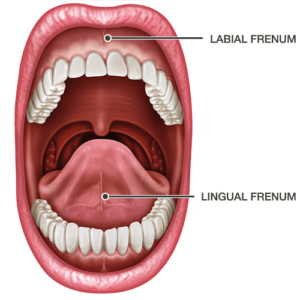The human body is in a constant state of the bone remodeling process, involving removal of weakened or damaged old bone tissues, called bone resorption, and adding new bones, called ossification. The process is natural, but when bone removal is faster than regeneration, it could affect bone mass thus making you prone to fracture and breakage. Just like other parts of the skeletal structure, resorption could affect your jawbone making your teeth’ root weak, thus prone to decay and damage. Resorption imbalance is rare, but knowing symptoms, cause, and treatments of bone resorption will help you in monitoring and keeping teeth in good shape. Ultimately it is all about a healthy smile, isn’t it? So, visit your dentist at regular intervals to keep your teeth in good shape and take timely measures to stop or reverse jawbone resorption and related dental ailments.
How does Bone Resorption work?
Human bones have two kinds of cells, osteoclasts, and osteoblasts, responsible for the lifelong bone remodeling process. Though bone creation happens faster in childhood and the process slows down with age, the remodeling continues at a rate of an average of 10% in adulthood. Osteoclast cells break down weakened or damaged bone tissues and pass to the bloodstream. This process is called resorption. Osteoblast cells are responsible for creating bone tissues to replace damaged bone tissues. This bone reinforcement process is called ossification.
The pressure chewing and biting applies on the jaw via teeth send signals to osteoblasts, thus creating new bone tissues. If you have lost a tooth due to injury, decay, or extraction, the jawbone of the affected area will not receive signals, thus osteoclasts will start to break down the jawbone. New bone tissues will still be created but at a slower rate.
Studies suggest that dentures increase the rate of bone degradation if not fitted well or became loose. This could aggravate further if you have severe gum disease for a long time. If you have a medical condition of weak and brittle bones, it could affect your dental structure.
Orthodontists use the natural process of bone remodeling in teeth alignment treatment using suitable devices to create subtle pressure to move teeth in the desired direction and strengthening them in the new position. In a dental implant procedure, screws are inserted in the jawbone and let fuse properly with the surrounding bone for stability and support to the artificial crown.
What is Normal Dental Resorption?
In the process of dental growth, resorption is normal when your child starts shedding primary or baby teeth. The root of primary teeth undergoes resorption to make way for permanent teeth. However, tooth decay caused by excessive consumption of sugary products is not resorption. Any sign of resorption after the growth of permanent teeth is serious as this could damage your permanent teeth.
What are the Types of Resorption?
If your body fails to accept tooth post-traumatic injury, it could lead to teeth resorption. You may lose dentin, the inner tissue beneath the enamel, or cementum, a kind of root cap material. Depending on the affected part of teeth, resorption is mainly of two types, namely external and internal.
Internal Resorption
As the name suggests, when resorption affects the tooth internally tissues inside the tooth start degrading. Although not common, it is more common in men and among those who underwent oral surgery. The resorption progresses gradually, so it might not come to notice in the early days. Your dentist will know about internal resorption only when he will notice dark spots in the X-ray during a routine examination. Internal tooth resorption sets in due to chronic inflammation of the pulp. So, it is necessary to visit the dentist at regular intervals to detect resorption at an early stage.
External Resorption
Unlike internal resorption, external resorption is rather common. It starts from the exterior of the tooth—the neck-like area where the root connects with the jawbone. It might appear like deep holes on the outside of the teeth. If left untreated for long, pink spots develop around this area and ultimately damage the roots of a tooth. Your dentist will take x-rays to examine the root, as roots start shrinking in length and root tips flatten.
Symptoms of Jaw Bone Resorption
Resorption is a consistent but very slow natural process and the rate could vary depending on age and other health conditions. It is very difficult to notice the onset of jaw bone loss at an early stage, but as the bone resorption rate increases with time you might notice gradual symptoms like:
- Although it won’t happen overnight, jaw bone loss will affect your bite and facial structure
- Difficulty in chewing as teeth alignment changes
- Gradual changes in facial structure lead to wrinkles formation around the mouth
- Your teeth might start shifting gradually
- Lips will start sinking inwards
- Bone loss of the affected area could cause jaw, facial pain, and headaches
- In extreme cases of jaw bone loss, patients experience speech impairment
- Orthodontic devices might not fit well due to changing shape
- Cavity like holes on the surface of teeth
- Infection and pain in the affected tooth area
- Tooth loss
If you visit the dentist regularly, you will know about bone resorption and jawbone loss early. Your dentist will recommend suitable treatments to protect your teeth and enhance the appearance of your teeth.
How is Dental Resorption Diagnosed?
Your dentist is trained to detect jaw bone loss and teeth resorption-related symptoms. Depending on the area affected, your dentist or oral hygienist will examine the tooth physically and recommend X-rays for a detailed diagnosis. The X-ray of your affected teeth will show dark spots inside the tooth in case of internal resorption. He may ask for details related to previous dental treatments and injuries if any. The focus of the diagnosis remains on knowing the extent of the damage so that suitable treatments could be recommended to prevent further damages.
What is the Treatment for Dental Resorption?
Depending on the area affected, the extent of the damage caused by resorption, and other dental health conditions, your dentist might recommend treatments to prevent further damage and to strengthen the jawbone. The rate of bone loss and generation could be altered with medication and surgical interventions, but the primary treatment involves protecting the remaining teeth using suitable dental treatments, which could be:
- Root canal treatment to treat pulp inside the tooth
- Crown placement to fill space and improve aesthetic appeal and functionality
- Gum surgery to control infection
- Tooth removal to protect surrounding teeth
Besides restorative procedures, your dentist might recommend some cosmetic improvement treatments such as implants and veneers. Dental implants are a good option to replace a missing tooth if you have enough bone density. If bone degeneration is significant, your dentist might recommend bone grafting before placing dental implants.
If bone loss is due to osteoporosis, your doctor will recommend suitable medications or hormone therapies to boost bone generation. However, the suitability of the treatment depends on age, gender, and other health conditions.
Can bone loss be reversed?
Bone resorption is a natural process so you cannot reverse bone loss on your own. But, with proper treatment, further damage could be stopped. However, the effectiveness of the treatment depends on the extent of the damage, age, and other health conditions like osteoporosis. Besides restorative procedures, your doctor might recommend bone grafting and hormone therapy to balance degeneration and growth.
Can bone density be increased after 60 with supplements?
Studies suggest that Vitamin D, Omega-3m, and Calcium supplements help in strengthening bone strength. Although it is a fact that one cannot regain the bone density of adulthood, a balanced diet could delay natural decay. However, you should consult your doctor before starting any medication as excess consumption could affect your health negatively.
How do you prevent jaw bone resorption?
The absence of tooth stimulates jaw bone loss, so a replacement tooth can help in preventing jaw bone loss. You should consult your dentist to explore replacement tooth options, which could be dental implants, or implant-supported dentures or bridges. The new tooth will exert the needed pressure on the jawbone to send signals to boost bone growth.
How much does a root canal cost?
The cost of tooth resorption treatment varies depending on the type of resorption, affected area, and of course the location of the dental clinic. The consultation fee and X-rays cost apart, if the extraction is required the cost could be in the range of $300 to $500 per tooth. You may have to pay an additional cost of $150 to $300 for anesthesia. If the root is already reabsorbed the treatment cost could be significantly lower.
If your doctor recommends root canal treatment for a single-rooted tooth (incisor or canine), the cost could be in the range of $400 to $1000, and for premolar or molar, it could be anywhere $500 to $1,400. You should better discuss the cost of tooth replacement treatment as it varies significantly.
Bottom Line
Resorption is natural in kids, but if you are noticing signs of resorption in adulthood, then you should consult your dentist immediately. Ignoring it for long is not advisable, as timely intervention could help you save your natural tooth. You can identify external resorption, but only when the tooth starts decaying. It is better to visit your dentist regularly as your routine dental X-rays will show signs of resorption at an early stage.
Sources:
- Teitelbaum, S. L. (2000). Bone resorption by osteoclasts.
https://science.sciencemag.org/content/289/5484/1504.abstract - Breeland, G., Sinkler, M. A., & Menezes, R. G. (2020). Embryology, bone ossification.
https://www.ncbi.nlm.nih.gov/books/NBK539718/ - Gunraj, M. N. (1999). Dental root resorption.
https://www.sciencedirect.com/science/article/pii/S1079210499700028 - Hadjidakis, D. J., & Androulakis, I. I. (2006). Bone remodeling.
https://www.researchgate.net/profile/Dimitrios_Hadjidakis/publication/6497771_Bone_Remodeling/links/5bb9c6694585159e8d880317/Bone-Remodeling.pdf



